3.3.1 Unit circle
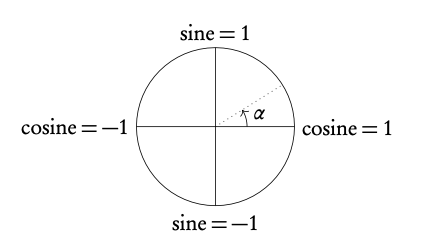
The unit circle is a circle with a radius of 1 drawn from the origin of a set of axes. The y-axis corresponds to sine and the x -axis to cosine; so at the coordinate (0, 1) it can be said that cosine = 0 and sine = 1, just like in the sin x and cos x graphs when plotted.
The unit circle is a a tool that you can use when solving problems involving circular functions. You can use it to find all the solutions to a trigonometric equation within a certain domain.
As you can see from their graphs, functions with sin x , cos x or tan x repeat themselves every given period; this is why they are also called circular functions. As a result, for each y-value there is an infinite amount of x-values that could give you the same output. This is why questions will give you a set domain that limits the x-values you should consider in your calculations or represent on your sketch (e.g. 0° ≤ x ≤ 360°).
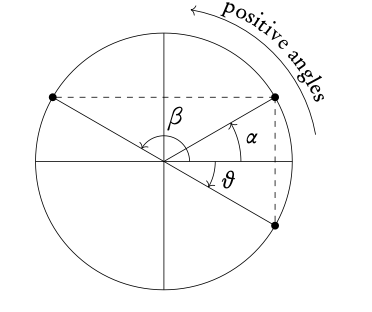
Relations between sin, cos and tan:
- α and β have the same sine
- α and θ have the same cosine
- β and θ have the same tangent
Example:

Table 3.2: Angles to memorize
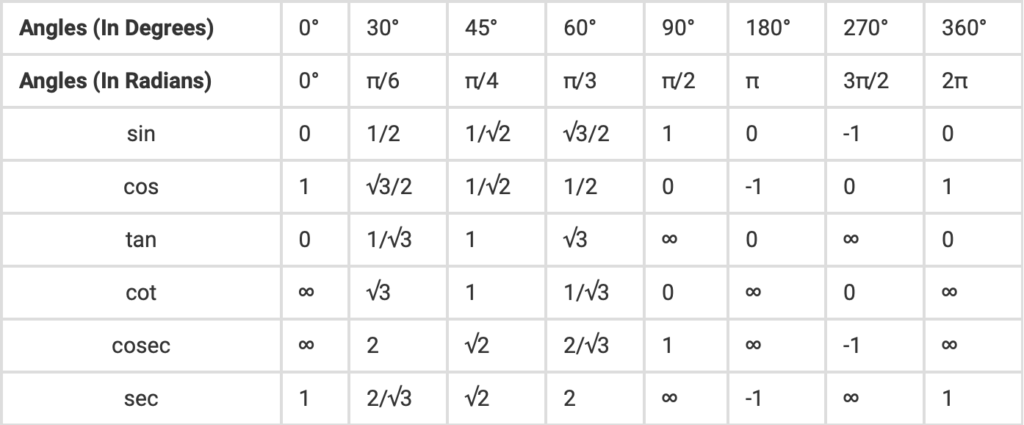
3.3.2 Graphs of trigonometric functions
sin x
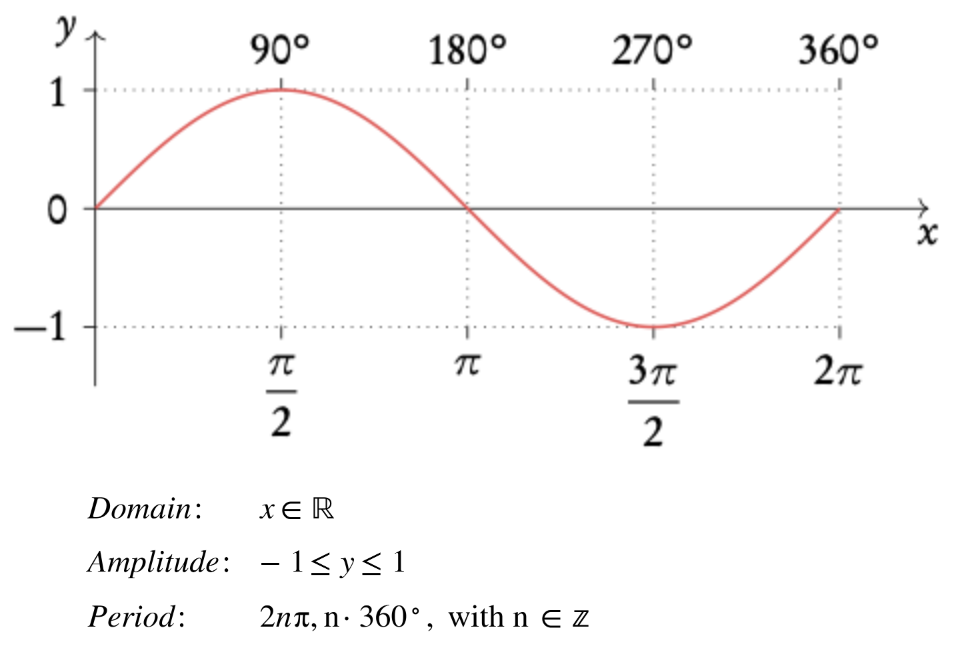
cos x
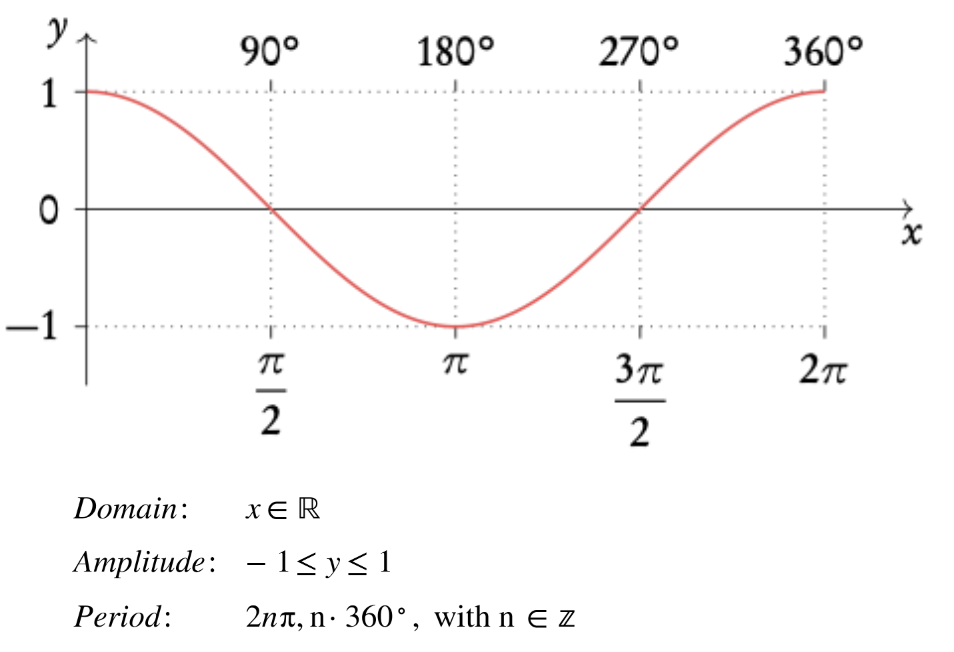
tan x
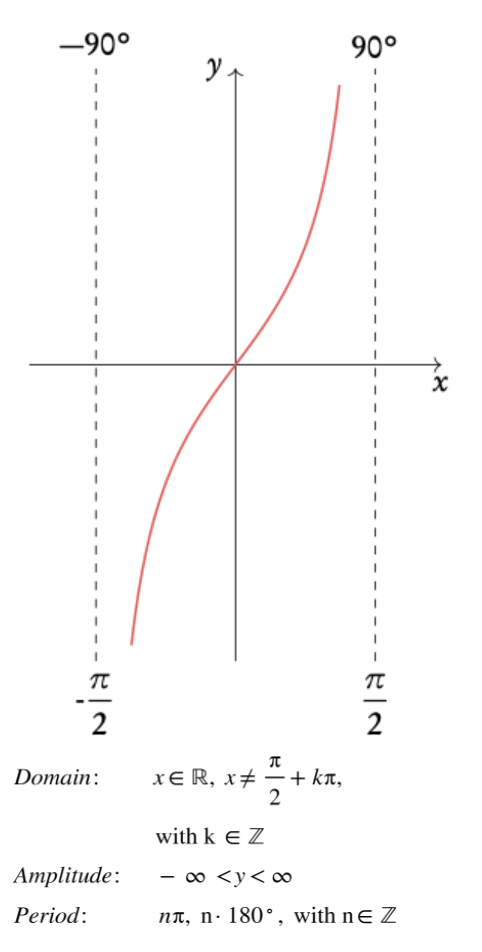
3.3.3 Transformations
Besides the transformations in the functions chapter, trigonometric functions have some transformations with their own particular names. For a trigonometric function, the vertical stretch on a graph is determined by its amplitude, the horizontal stretch by its period and an upward/downward shift by its axis of oscillation.
A trigonometric function, given by y = a sin(bx + c) + d, has:
- amplitude a
- period of 360°/b or 2π/b
- horizontal shift of +c to the left, in degrees or radians
- vertical shift of +d upwards, oscillates around d.
Note: A negative a will flip your graph around the x-axis. Negative values of c and d will lead to shifts to the right and downwards the respective number of units
Example: Transformations of y = cos x .
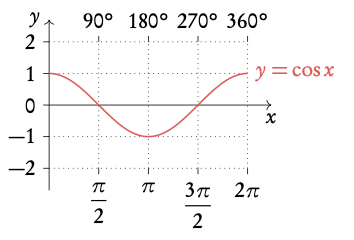
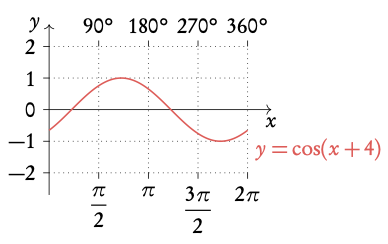
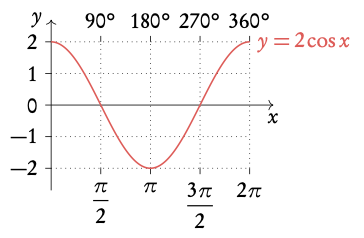
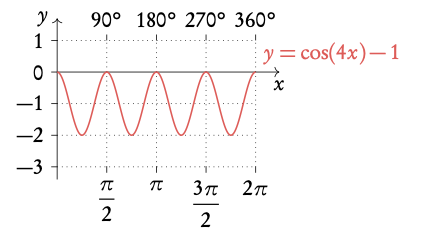
3.3.4 Identities and equations
In order to solve trigonometric equations, you will sometimes need to use identities. Identities allow you to rewrite your equation in a way that will make it easier to solve algebraically.
DB 3.5 & 3.6
Trigonometric identity
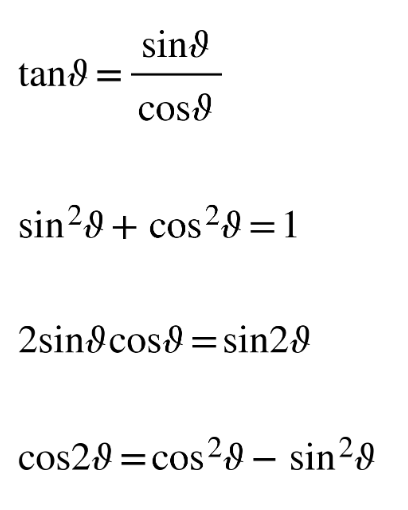
Popular rearrangement
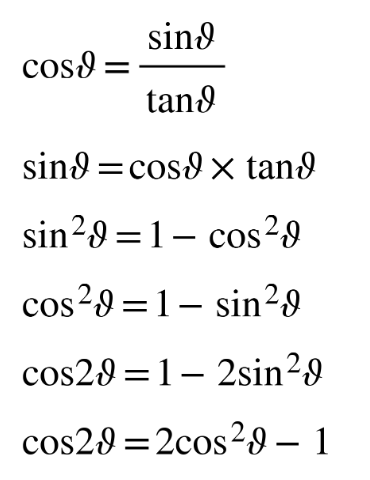
Solving equations with trigonometric identities
Solve 2cos2 x + sin x = 1, 0° ≤ x ≤ 360°.
- Identify which identity from the formula booklet to use. Note that you are always aiming to get an equation with just, sin, cos or tan.
Here we could use either
sin2 θ + cos2 θ = 1 or
cos2 θ − sin2 θ = cos 2θ.
We will use the first so that we get an equation with just sin.
2. Rearrange identity and substitute into equation.
cos2 θ = 1 − sin2 θ
2(1−sin2 x) + sinx = 1
2 − 2 sin2 x + sin x = 1
−2 sin2 x + sin x + 1 = 0
3. Solve for x giving answers within the stated range. Recognise that here the equation looks like a quadratic equation.
Substitute u for sinx:
−2u2 + u + 1 = 0
(−2u − 1)(u − 1) = 0
u = sinx ⇒ 1 x ⇒ 90°
u = sinx ⇒ −0.5 x ⇒ 210° or 330°
